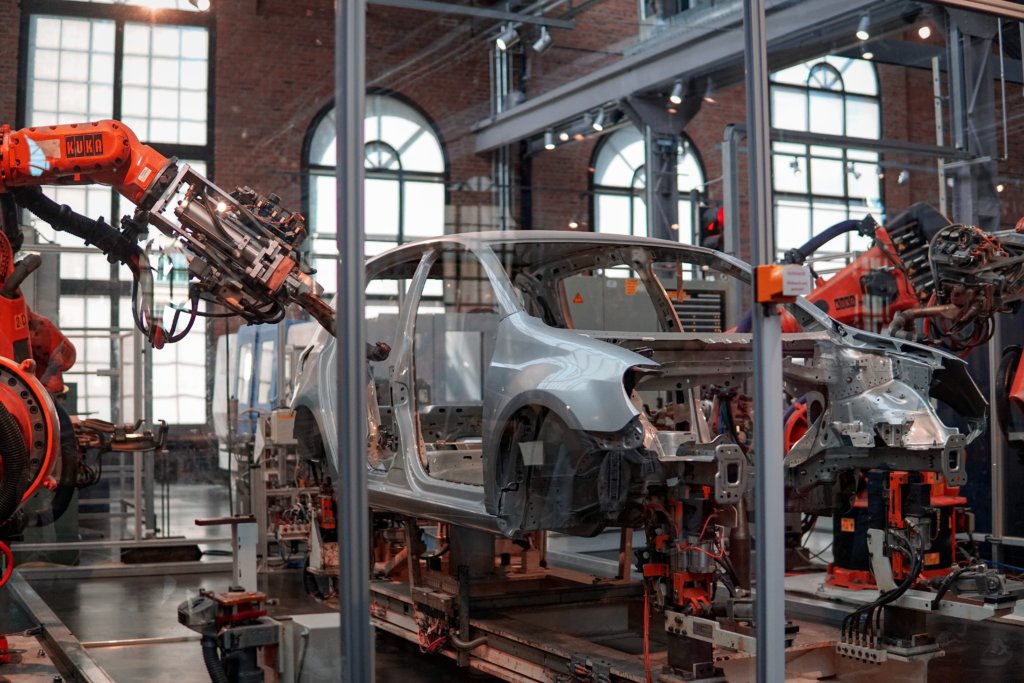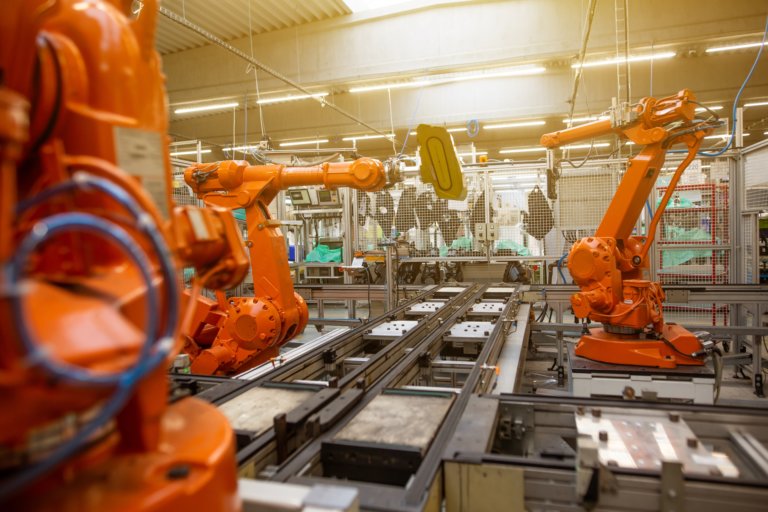The Path to the Industrial Metaverse

In the industry of tomorrow, the boundaries between the physical and digital worlds will blur. People will interact with machines and sensors in new and innovative ways to shape and optimize processes on a global scale and in real time. These processes, which in the prevailing industrial paradigm still require time-consuming re-coding or re-designing, are at the heart of the emerging Industry 4.0.
To ensure the success of this transformative journey, a new infrastructure must be developed and adopted, which differs from the one we’re used to. The industrial metaverse is precisely this kind of infrastructure and will be instrumental in realizing the vision of an Industry 4.0 in which industrial processes are automated, interconnected, flexible, and modeled.
In the industrial metaverse, the digital and real worlds seamlessly merge for manufacturing, controlling, and planning. Where are we now, what do we know about the industrial metaverse? What are the key technologies? We’ll provide answers to the most important questions and shed light on what the future of industry could look like.
The Industrial Metaverse - 5 key takeaways
- In the industrial metaverse, the real and digital worlds converge.
- There is no standard, unified definition.
- Industrial processes are becoming more flexible, automated, efficient, collaborative,and sustainable.
- The industrial metaverse is emerging based on internet technologies and through acombination of foundational technologies (hyperconvergence).
- Digital twins are the centerpiece, supported by sensors that facilitate connectivitywithin the Internet of Things, creating a platform for seamless data interaction.
Embracing the Future with the Industrial Metaverse
To run smoothly, industrial processes require stable framework conditions. These include a reliable supply of raw materials, skilled personnel, and dependable supply chains. In recent years, however, these critical conditions have experienced bottlenecks – presenting major challenges to industry. On top of this, there is tough global competition which calls for innovative solutions and efficiency improvements. Or at least, it should. The reality is that in Germany, technological change and the corresponding and necessary digitization have yet to reach the levels required for a future-proof, competitive, and resilient economy. Mounting pressure for sustainability, environmental protection, and decarbonization – all also statutory requirements – are triggering additional transformations which businesses should account for when designing production and manufacturing processes.
Industry 4.0 delivers solutions to these challenges, offering organizational signposts to guide businesses. Complementing Industry 4.0 is the industrial metaverse, and is where Industry 4.0 becomes tangible, where theoretical ideas of human-machine collaboration, cyber- physical network systems, and the Internet of Things become a reality.
- Continue reading in the ePaper: “7 essentials to unlock the industrial metaverse: Revolutionary automation for the factories of the future”
Unlocking the potential of the Industrial Metaverse
Defining the industrial metaverse is challenging as it is a concept still in its infancy. The novelty of the concept may be one factor in this, but the primary reason is its cross-sectoral and international applications compounded by the lack of standards. Current definitions, however, at least agree on key characteristics: With its convergence of technologies and information, the industrial metaverse promises unparalleled flexibility and automation. And for many in the business community, these are the cornerstones of future-readiness. With the industrial metaverse, business leaders recognize that the industrial metaverse is the key to achieving these goals.
Other characteristics:
- Virtual Environments: These encompass digital twins, which serve as representationsof production facilities and processes, and can be used as training spaces
- Seamless Connectivity: The industrial metaverse fosters collaboration amongindividuals, sensors, and machines, as well as for product trainings
- Real-time Date: Data are generated in real-time, readily available and can be usedimmediately
- AI Integration: AI may play a role – but the industrial metaverse is capable offunctioning effectively without it
- Interoperable and Decentralized Systems: Systems are designed to work together seamlessly and are distributed for enhanced flexibility and reliability
In the industrial metaverse these facets converge, becoming tangible and immersive. It is a platform which people can log on to from anywhere in the world. They become part of a virtual environment where they can simultaneously access digital copies, i.e., digital twins, of manufacturing plants and production processes. Here they have the power to model, simulate, optimize, make changes, access specific parameters, and even perform repairs. Alternatively, they can conduct tests on new digital twins in this virtual environment to assess their feasibility and practicality in the real world.
- For more information, see „Digital Twin vs. Digital Shadow“
The Technologies of the Industrial Metaverse
One digital twin does not an industrial metaverse make – but it is the linchpin, without it, the very essence of the industrial metaverse would cease to exist. However, what truly distinguishes the industrial metaverse from conventional industrial production is the orchestration of various foundational technologies, particularly the hyper-convergent infrastructure. When combined with artificial intelligence (AI), it empowers devices, machines, and processes within the Internet of Things (IoT) with predictive capabilities. This combination of hardware, software, IT infrastructure, and connectivity technologies makes the synchronicity of real and virtual worlds possible and offers increased efficiency, automation, and flexibility.
At a glance: Key technologies and their interactive connections
Digital Twin
A digital twin can either be the virtual representation of a physical object, process, or system with identical properties, or it can be a simulation created before their real-world counterpart is built. Digital twins offer a unique advantage by enabling processes such as optimizations or planned interventions in the real world to either be initially carried out and tested in the digital realm or performed on the digital twin, which subsequently impacts the real-world counterpart.
Virtual Reality and Augmented Reality
Virtual environments in the industrial metaverse can either be copies of existing physical environments or serve as a simulation. No matter what: Teams can immerse themselves in this virtual environment, meeting regardless of their physical locations, simultaneously work on digital twins of machines, discuss processes, and conduct inspections or trainings. Augmented Reality (AR) seamlessly bridges the gap between the digital and physical worlds. Users of the device have information, data, or instructions from a tablet projected into their line of sight.
In the industrial metaverse, the virtual environment can either replicate an existing physical space or serve as a simulation. Whatever the case may be, teams can immerse themselves in this virtual realm, meeting regardless of their physical locations. Here, they can collaboratively and simultaneously work on digital twins of machinery, discuss processes, perform maintenance, or conduct training sessions. When an individual is using an AR device, information, data, or instructions are superimposed onto their field of view through a tablet or similar device.
Technology Platform
The industrial metaverse’s control center is the technology platform. It is here that the data from various sources converge. The platform has to be upgradable, making it possible to connect additional technologies via plug-and-play during expansions. It is based on internet technology and is based in the cloud.
Sensors
Sensors connected to machines and devices make it possible to transmit and receive data. A previously specified language – which may be a computer language – is used for communication.
Internet of Things (IoT)
The Internet of Things refers to a network of physical devices and machines that are embedded with sensors and connected with each other. Information from the Internet of Things is collected as data on the platform.
Artificial Intelligence (AI)
In the industrial metaverse, Artificial Intelligence is based on empirical values from the Internet of Things. Enabling advanced descriptive data analytics and predictive analytics, it delivers the information necessary for decision-making, taking into account a number of different parameters and scenarios. It will recognize if processes deviate from desired outcomes, can make suggestions for optimization and increased efficiency, and handle routine assignments.
Blockchain
Not all processes may be deleted immediately upon competition. Some data are important for the future and have to be preserved. Blockchain provides a straightforward, secure means of documentation.
Interoperability
All components in the industrial metaverse have to be configured for interoperability, making it possible to expand or integrate other systems at a moment’s notice, without any restrictions.
From Vision to Business Model
At the moment, it may seem as if there were only very limited examples of industrial metaverse applications. This is deceiving. Transformation takes time – and compared to results, interim stages and processes are a rather less popular topic of conversation. In all sectors, but in particular in the manufacturing industries, businesses are currently exploring their own paths to and within the industrial metaverse. They discover the applications which offer the best fit, trial innovations by using digital twins rather than spending resources on building real machines and plants, run simulations, improve processes, and due to the advantages of automation, regain time for creative thinking and entrepreneurial planning. They compile their own customized technologies and gain experience. In a few years’ time, the term industrial metaverse will be the new normal and become part of what it is: a space for sustainable, data-based, forward-looking industrial production in the early 21st century.
*Good to know: Immersive virtual environment
An immersive virtual environment is a simulated environment created with VR technologies. Users become a part of this environment and experience a real-world presence in the virtual world. They can interact with and cause events in the virtual environment.
Author
Susanne Weller, Weller Media


